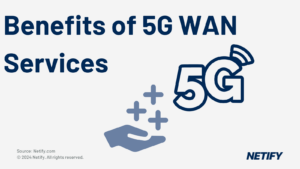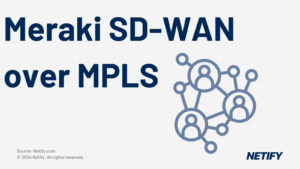| SD-WAN costs vary based on appliance type, features, bandwidth, and deployment model, with prices ranging from £80 to £800+ per month per site. |
Netify finds the majority of IT leaders need to set budgets before comparing vendor solutions. What should a business expect to pay for SD-WAN as a component of network security architecture?
SD-WAN costs depend on several factors including appliance type, ongoing licences, and management needs. For basic SD-WAN deployments, monthly costs range from £80 to £200 ($100 to $250) per site. Enterprise-level setups with advanced features such as security and performance optimisation can cost £400 to £800+ ($500 to $1,000+) per site. Managed services may add £100 to £300 ($125 to $375) per month. The one-time appliance costs range from £1,200 to £9,500 ($1,500 to $12,000), depending on capacity and features.
| Cost Type | Cost Range (GBP) | Cost Range (USD) | Details |
|---|---|---|---|
| SD-WAN Appliance (one-off) | £1,200 – £9,500 | $1,500 – $12,000 | Entry-level to high-end appliances based on capacity |
| Basic SD-WAN Licence (per site) | £80 – £200 / month | $100 – $250 / month | Covers standard functionality and basic management tools |
| Enterprise SD-WAN Licence | £400 – £800+ / month | $500 – $1,000+ / month | Advanced security and optimisation features (NGFW, SASE) |
| Managed Services (add-on) | £100 – £300 / month | $125 – $375 / month | Provider handles installation, troubleshooting, and updates |
| Ongoing In-house Support (annual) | £8,000 – £10,000 / year | $10,000 – $12,500 / year | For updates, maintenance, and network monitoring |
When trying to decide whether to switch from a traditional Wide Area Network (WAN) to a Software-Defined Wide Area Network (SD-WAN) solution, IT decision makers commonly want to know about the costs involved and if SD-WAN truly is more cost-effective than traditional WAN networks.
SD-WAN aims to improve network connections by optimising the network infrastructure through a networking overlay. This resides on top of existing underlay communication links and controls data flows to improve performance whilst also intending to reduce expenditure. This article details a financial analysis of SD-WAN in comparison to traditional WAN networks with specifics for the UK market and emphasises where costs are involved with SD-WAN.
How do bandwidth requirements affect SD-WAN costs?
The first of these factors is network bandwidth requirements, which can cause the cost of SD-WAN to vary heavily. In the UK, basic broadband can be leveraged for low prices such as £50 per month. However, on the other side of the scale, high-speed dedicated ethernet can be implemented and this often exceeds £1000 on a monthly basis. When considering SD-WAN solutions, it is important to understand your business’ network bandwidth requirements, what the current underlay is, and which SD-WAN vendors can best optimise your communication links to provide a more affordable solution.
Which features and functionalities impact SD-WAN pricing?
Being a network overlay, SD-WAN typically comes pre-packaged with features in order to provide optimisations over the network underlay, but not all SD-WAN solutions are equally abundant in these features. The more basic SD-WAN solutions provide functionality for standard traffic optimisation, which can be far less expensive than solutions that offer advanced security built-in. With many features to offer, such as WAN optimisations, Application Aware Routing, Zero Touch Provisioning (ZTP), typically, the more feature-rich an SD-WAN solution is, the higher the cost associated.
What is the difference in cost between cloud, on-premises, and hybrid SD-WAN deployment models?
One way that some SD-WAN vendors provide different features and functionalities is by leveraging the cloud to deploy the SD-WAN solution, enabling SaaS capabilities. Cloud-deployed SD-WAN models typically charge a subscription fee, whereas on-premises SD-WAN often charges a higher upfront fee and lower recurring licensing fees. This difference is due to cloud solutions hosting the SD-WAN and all of the appliances to manage additional features at remote locations. Finally, hybrid solutions provide a mix of the two and can often be priced in the middle of each. Depending on the vendor and your business’ preferred deployment model, this can greatly impact the cost associated with utilising SD-WAN.
How do scalability and capacity influence SD-WAN costs?
It should be noted that the size of the network, number of connected sites, and total user count can have a direct consequence for the cost of SD-WAN solutions. There are cost-effective solutions that enable a variation of user count and scaling, but for typically fixed amounts of users/devices, a pay-as-you-go model can often help manage costs as these are usually lower. Unfortunately, these models are known to cost more to scale than variable solutions, so it is imperative to evaluate the necessity for network scaling when choosing the scalability and capacity of your solution.
What security features contribute to SD-WAN costs?
For added security, SD-WAN often offers features such as Next-Generation Firewall (NGFW), Intrusion Prevention Systems (IPS), and Secure Web Gateway (SWG). These features all come at an added cost when compared to solutions without these capabilities. Further to this, more costs are involved when integrating Secure Access Service Edge (SASE) or SSE. By evaluating pre-existing security and determining if it is compatible with current SD-WAN vendor offerings, you may be able to reduce your SD-WAN cost by leveraging pre-existing appliances. If not, factoring in the cost to protect your business should be heavily considered.
How do managed services impact SD-WAN pricing?
As with all technology, it can be frustrating when things go wrong, especially when you don’t have a dedicated in-house team of experts to help fix the issue. One way that this issue has been mitigated is that vendors can offer managed services. This assists with installation, maintenance, troubleshooting, and provides general support for your SD-WAN needs. However, due to the use of external administration/support, this impacts SD-WAN pricing, with managed services costing far more. Determining your business’ network administration competency level, especially for SD-WAN, is essential for evaluating if a managed service is required.
What are the different SD-WAN pricing models available?
Whilst the cost of SD-WAN can vary based on the features and capabilities provided, the basis for pricing models also varies. These pricing models can be based on anything from regular subscriptions, bandwidth usage, service, or plain flat-rate fees. When the cost of SD-WAN is a high priority for your business, it may be worth considering the regularity of payments and where certain pricing models may cause a fluctuation of prices month-on-month.
What are the typical network underlay and SD-WAN overlay costs?
As SD-WAN is an overlay over the network infrastructure, there are often costs for both the network underlay and the SD-WAN overlay.
How do SD-WAN and traditional WAN costs compare?
SD-WAN typically provides cost savings over traditional WAN networks that utilise MPLS. Through leveraging low-cost broadband connections, SD-WAN can reduce network reliance on expensive MPLS circuits and in some instances has been known to lower network costs by up to 50%.
Key features of SD-WAN include a centralised management pane and automation of network processes. These reduce operating expenses for network administration and troubleshooting due to the reduced workload and competencies required for your business’s network administration team.
What are the average SD-WAN costs in the UK?
For those wondering what the average cost for SD-WAN is within the UK, the typical price range for SD-WAN within small businesses is £50-£300 per month. Meanwhile, medium to large enterprises can often spend £300-£1000+ per month on SD-WAN solutions. These averages vary based on numerous factors such as geographical locations, service provider, specific business requirements, but give key insights into expected outgoings where SD-WAN is adopted.
What hidden costs should businesses consider when evaluating SD-WAN solutions?
To finalise any evaluation of SD-WAN costs, it is important to consider there may be unaccounted for charges. Sometimes vendors can hide the charges for initial setup and installation fees, whilst there may be added charges for ongoing maintenance/upgrades, and training/adaptation for network administrators may come at a further cost. It is important to consider all of these elements prior to selecting an SD-WAN vendor if cost is a high priority for your business.
Conclusion
SD-WAN can provide cost savings whilst also improving performance when compared to traditional WAN networks. These costs depend on various factors such as bandwidth requirements, features, deployment models, and scalability whilst pricing models vary from subscription-based, pay-as-you-go, and fixed rate pricing. As costs include both the physical network underlay and SD-WAN overlay, it is important to evaluate compatible components and ensure the availability of adequate communication links for SD-WAN to properly function. Though SD-WAN is often more affordable than MPLS, it is important to consider all potential costs including ongoing or hidden charges.
Looking for SD WAN comparison advice? We’ll help you find the right vendors for your needs and budget in 30 minutes or less, for free.


